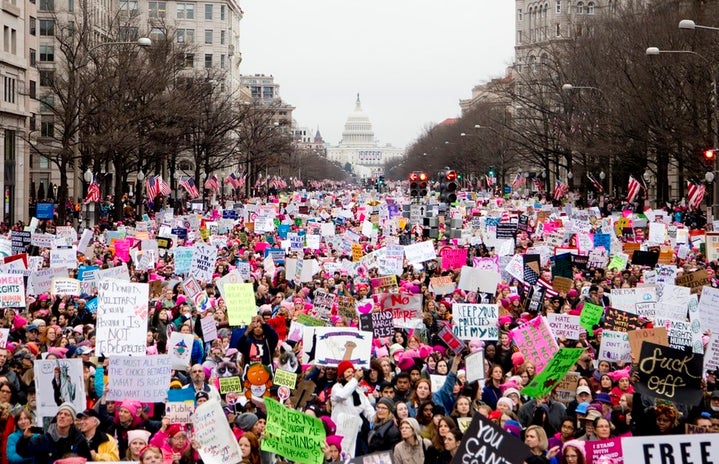In late September of 2020, a United Nations report concluded that women’s rights in the current world system continue to falter in consequence to the ongoing Coronavirus pandemic. The U.N. reported that it is estimated that by 2021, 47 million women will suffer in extreme poverty, making the current statistic over 435 million.
These numbers beg the question, what is the future of women’s rights? In order to evaluate this, predominant issues that continue to have adverse effects on women must be considered.
- The Ongoing Issue of Violence Against Women
-
Femicide is defined by the intentional murder of women on the basis of sex. Many times, this event is most often perpetuated by men and differs from general homicide in that it centers around instances of domestic or sexual abuse from a current or former partner.
For reference on how significant this issue is, The Global Burden of Armed Violence’s 2014 database showcases that between 2007 and 2012, on average, 60,000 women were killed violently around the world.
According to the United Nations, it is estimated that of the 87,000 women who were intentionally killed in 2017 globally, more than half (approximately 58 percent) were killed by intimate partners or family members. Essentially, over 137 women are murdered by a member of their own family every day.
Femicide is not the only issue that affects women in the current day, adult women account for nearly half (49 per cent) of all human trafficking victims detected globally. When including both women and girls, together they account for 72 percent, with girls representing more than three out of every four child trafficking victims, the U.N. reports.
India, which is ranked as one of the top ten countries for the largest numbers of sex trafficking in the world, had over 61 percent female victims in 2020.
Genital mutilation is also very common in certain areas of the world, specifically in Egypt, Sudan, Guinea, Djibouti, Kenya, Yemen, and Nigeria, where over 20 million women have undergone female genital mutilation by a health care provider.
Femicide, human trafficking, and forced genital mutilation are only some examples of the acts of violence that women endure in the international system every day. The issue is structural, and structural changes are required to ascertain that there is no continued neglect of women’s rights.
- Structural Issues and How to Move Forward
-
In a study done by the World Health Organization, the societal and structural issues that encourage said violence are boiled down to raging gender inequality, reductions in government social spending on areas such as health and education, and a low number of women in elected government and positions of power.
Gender inequality, first and foremost, can be measured using a variety of points.
In the U.N. summit this September, Secretary General Antonio Guterres highlighted how women are omitted from decision making roles, yet femicide and other prevalent issues relating to violence against women are widespread.
It is estimated that in Europe alone, women make up significantly less that 40 percent of senior and middle management positions, averaging in the low to mid 30s percent tile. With a decrease of women in higher-paying positions, this contributes to the gender wage gap that continues to affect women around the world.
Another significant issue that reflects ongoing gender inequality is the topic of land ownership. In countries such as Uganda, Columbia, Cambodia, and Pakistan, women make up between 1 and 15 percent of sole land owners, with women representing numbers as low as 2% in Pakistan in 2013.
While gender inequality contributes to this issue, women’s rights and economic development are highly correlated.
As outlined by the United Nations, education, upskilling and re-skilling over the life course are extremely significant for women’s and girl’s health and wellbeing, as well as their income-generation opportunities and participation in the formal labor market. Therefore, increased spending on education could help target the ongoing disparities between women and men in the competing market.
Healthcare is also an area where reductions in spending can negatively impact women, as average annual per capita spending among U.S. women ages 19-34 was $3,402 in 2015 compared to $1,891 among men. Access to more reproductive resources and health benefits could aid in reducing violence against women in the current age.
As reported by the World Health Organization, a lack of women in elected government and positions of power also contribute to increased violence against women. Specifically the lack of representation in summits, peace negotiations, and climate talks.
While women make up over 25-40 percent of the ambassadors in the international system, states such as the United States (30 percent), Canada (29 percent), and Columbia (28 percent) continue to contribute to the unequal numbers of women in international relations.
Moving forward, it is increasingly important to advocate for the increase of women in positions of power so that issues such as femicide can be prioritized in the current world system.
The issue of violence against women will not be solved overnight, but it requires global cooperation and the acknowledgement of the existence of said disparities between sex/gender in the international system.



